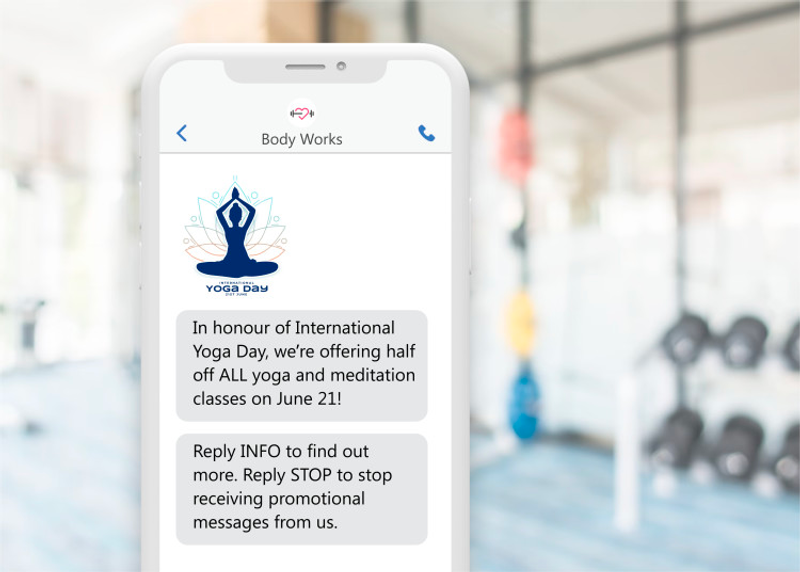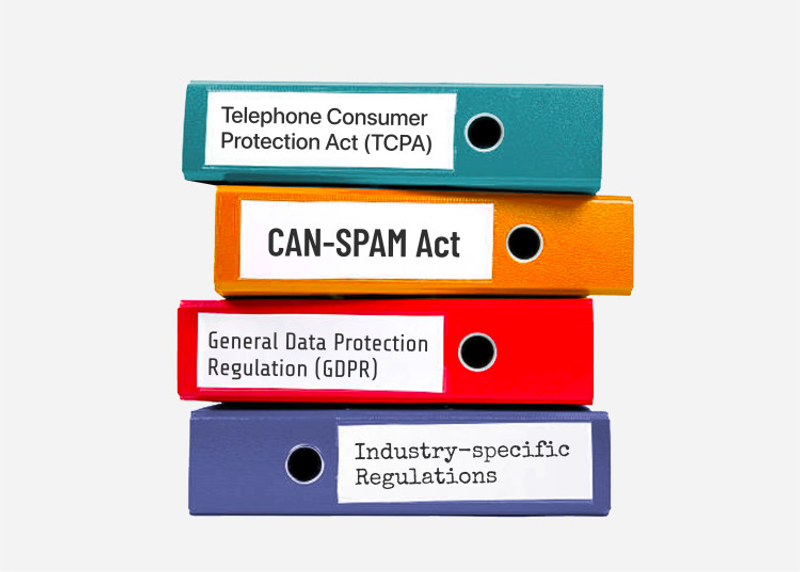In our dynamic, hyper-connected modern world, the art of effective communication holds the key to unlocking success in the world of our personal and professional endeavours. Text messaging has risen as a vital instrument of interaction, providing us with the gift of instantaneous connectivity and unmatched ease, enabling painless exchange of ideas and information.
However, the rapid increase in spam texts - those annoying, unsolicited messages that clutter our inboxes - has significantly impacted the overall user experience. The prevalence of spam texts can lead recipients to feel inundated and frustrated, ultimately undermining the potential of this powerful communication channel. Consequently, it has become increasingly vital for businesses, organizations, and individuals alike to adopt thoughtful strategies for sending text messages that are considerate of their recipients while avoiding irritation or annoyance.
In the following minutes, we'll explore some of the top strategies for sending text messages with the utmost respect and consideration for your recipients. By being mindful and attentive to the messages you and your business send, you can create more positive experiences for recipients, paving the way for productive and engaging communication that truly stands out in a sea of spam texts.
Know Your Audience
One of the most critical factors in sending texts without annoying your recipients is understanding their preferences and tailoring your messages accordingly. It sounds simple, but requires extensive thought & research. This involves segmenting your contact list based on factors such as age, location, interests, and even past interactions, allowing you to send more personalized and relevant messages that truly resonate with your audience.
Taking the time to analyze your recipients' behavior, preferences, and communication styles can help you craft messages that are more likely to be well-received and appreciated. By paying close attention to the feedback you receive from recipients, you can continually refine your messaging strategy to better align with their needs and expectations.
By catering to the specific needs and preferences of different groups within your contact list, you can minimize the likelihood of sending irrelevant or unwanted messages that may lead to frustration or annoyance. Moreover, this targeted approach increases the chances of your recipients engaging with your content, leading to a more effective communication strategy that fosters stronger relationships with your contacts.
To successfully segment your contacts using various criteria, it's essential to have an organized system for collecting and analyzing information about them. This will ensure that each recipient receives personalized messages tailored to their unique preferences. Additionally, tracking engagement levels and adjusting your messaging strategies accordingly can lead to optimal results and higher satisfaction among your recipients.
Example 1: Fitness Studios
Imagine you run a fitness studio that offers various classes such as yoga, Pilates, and high-intensity interval training (HIIT). Your contact list consists of current and potential clients with different age groups, fitness levels, and preferences. To send personalized text messages without annoying your recipients, you could segment your contact list based on their preferred type of workout.
For instance, you could send a message to yoga enthusiasts about an upcoming workshop or a special promotion for new yoga classes. Meanwhile, for those who enjoy HIIT workouts, you could inform them about a new class schedule or offer a limited-time discount on HIIT classes. By understanding your recipients' preferences and sending targeted messages, you increase the likelihood of engagement and ensure your communication is well-received.

Example 2: University
Consider a university that wants to communicate with its students more effectively via text messaging. The student body is diverse, with individuals pursuing different majors, belonging to various clubs and organizations, and hailing from different countries. To tailor their messages and avoid annoying the recipients, the university can segment its contact list based on factors such as major, year of study, or club membership.
For example, the university could send targeted messages to engineering students about upcoming career fairs specifically tailored for their field of study. Simultaneously, they could send updates regarding study abroad opportunities to students who have previously shown interest in international programs. By segmenting the contact list in this manner, the university ensures that each student receives relevant information tailored to their unique interests and needs.
Regardless, understanding and respecting the preferences of your recipients is non-negotiable when sending text messages to not cause irritation or annoyance. By segmenting your contact list and crafting personalized messages that cater to different groups' needs, you can ensure a more positive experience for both you and your recipients. Employing a well-organized system for managing contact information and analyzing engagement data will enable you to optimize your communication strategies for maximum effectiveness.
Timing is Everything
Timing is indeed everything when it comes to sending texts without causing inconvenience or annoyance. By being mindful of the timing of your messages, you can ensure that your communications are respectful and well-received. Sending messages too early in the morning or late at night can disrupt the recipient's daily routine, create negative associations with your communications, and even lead to a decrease in engagement.
For example, if you're a local business owner wanting to send promotional texts about an upcoming sale, sending the message at 6:00 am would almost certainly cause frustration for recipients who are still asleep or getting ready for their day. On the other hand, texting them at 11:00 pm might interrupt their relaxation time or even wake them up if they've already gone to bed.
A more appropriate approach would be to schedule your texts during standard business hours when recipients are likely to be awake, engaged, and receptive to your messages. For instance, sending the promotional text at 2:00 pm on a weekday could increase the chances of your recipients taking note of the sale and considering attending. By carefully considering the timing of your texts, you can maintain respectful communication and enhance the effectiveness of your messages.
To ensure that your texts are sent at optimal times, you can use automation and scheduling tools available in various messaging platforms like TxtSquad. These features make it easy for users to schedule messages at appropriate times, ensuring that their communications align with recipients' availability and preferences. You can guarantee that your texts are well-received and elicit positive responses from your audience.
Keep It Concise and Relevant
Another key strategy for sending texts without annoying your recipients is to keep your messages concise, relevant, and focused on essential information. Long-winded, poorly written messages or those that contain unnecessary details can be frustrating for recipients to read, leading them to ignore, delete, or even develop a negative impression of your communications.
By crafting clear, direct messages that get straight to the point, you can ensure that your recipients understand the purpose of your communication and are more likely to engage with your content. Additionally, maintaining relevance by only sharing information that genuinely interests or benefits the recipient helps create a positive association with your messages.
Bad example: "Hey there! We just wanted to let you know that our store has a fantastic sale going on today with lots of great items at unbeatable prices! You really don't want to miss out on these amazing deals because they're only available for a limited time. So why not swing by and check it out? We're located at 123 Main St., and we'll be open until 9 pm tonight. See you there!"
Good example: "Today only: Get 50% off all items at our store on 123 Main St. Don't miss out on these unbeatable deals! Open until 9 pm."
The good example is concise, clear, and focuses on the essential information – the discount, location, and time frame. This makes it easy for recipients to understand the message's purpose quickly and decide whether they are interested in taking advantage of the offer.
Ensuring that your messages are both concise and relevant can significantly enhance their effectiveness while minimizing any annoyance felt by your recipients. By crafting straightforward messages that prioritize essential information and cater to the recipient's interests or needs, you can foster more productive communication and positive experiences for all parties involved.
Opt-in and Opt-out Options
A crucial aspect of respectful text messaging is providing recipients with the option to opt-in or opt-out of your communications. By giving recipients control over the messages they receive, you demonstrate respect for their preferences and minimize the risk of annoying them with unwanted texts.
There are several reasons why ensuring opt-in and opt-out options are essential:
1. Trust-building: Giving your recipients the choice to receive or stop receiving messages from you establishes trust and transparency in your communication. This trust can lead to stronger relationships and increased customer loyalty.
2. Relevance: Opt-in and opt-out options allow recipients to customize the information they receive, ensuring that they only get content relevant to their interests. This increases engagement levels and overall satisfaction with your messages.
3. Compliance: Providing clear opt-in and opt-out options is a requirement under various industry regulations and legal frameworks, such as the Telephone Consumer Protection Act (TCPA) and the General Data Protection Regulation (GDPR). Compliance with these regulations is critical to avoid potential fines, penalties, and damage to your reputation. More on this later!
4. Reduced spam complaints: Offering easy-to-use opt-out options reduces the likelihood of recipients reporting your messages as spam. A lower spam complaint rate helps maintain your sender reputation and deliverability rates, ensuring that your legitimate messages reach their intended audience.
By implementing clear opt-in and opt-out options in your text messaging campaigns, you can ensure that recipients only receive messages they have explicitly consented to receive. This not only helps to maintain a positive relationship with your contacts but also ensures compliance with industry regulations and legal requirements.
Stay Compliant with Regulations
Adhering to industry-specific regulations and legal requirements is essential for sending texts without annoying your recipients. Staying compliant with relevant laws not only helps you avoid potential fines and penalties but also maintains a positive reputation with your contacts, fostering trust and goodwill in your relationships.
Several prominent regulations govern text messaging practices, which businesses and organizations must comply with to ensure their communications are respectful and legally compliant:
1. Telephone Consumer Protection Act (TCPA): This U.S. federal law restricts telemarketing calls, auto-dialed calls, prerecorded calls, text messages, and unsolicited faxes. The TCPA requires businesses to obtain prior express written consent from recipients before sending promotional or marketing texts.
2. General Data Protection Regulation (GDPR): This European Union regulation aims to protect the privacy of individuals by governing how organizations collect, process, and store personal data. GDPR requires businesses to have a lawful basis for processing personal data, provide clear opt-in and opt-out options, and maintain transparency in their data processing activities.
3. CAN-SPAM Act: This U.S. law establishes rules for commercial email messages, including providing recipients with a clear and conspicuous way to opt-out of receiving future emails. While the CAN-SPAM Act primarily addresses email communications, some provisions may apply to text messages as well.
4. Industry-specific regulations: Depending on the nature of your business or organization, there may be additional industry-specific regulations governing your text messaging practices. For instance, healthcare providers must comply with the Health Insurance Portability and Accountability Act (HIPAA) when sending texts containing protected health information.

TxtSquad: The Ultimate Solution for Respectful Communication
TxtSquad is a comprehensive solution for businesses and individuals seeking to send texts without annoying their recipients. With features such as scheduling meetings, sending messages, and keeping track of your schedule, TxtSquad streamlines the communication process and ensures that your texts are respectful, efficient, and compliant with industry regulations.
Healthcare providers, employers, and community-based organizations can benefit significantly from TxtSquad's features, allowing them to maintain effective communication with their contacts while minimizing the risk of annoyance or inconvenience.
Conclusion
By embracing some simple yet effective strategies like getting to know your audience, choosing the right time for sending messages, keeping your texts short and sweet, offering opt-in and opt-out options, and staying on top of legal regulations, you can make sure your text messaging game is both respectful and appreciated by those on the receiving end.
By adopting TxtSquad as your communication platform, you can take advantage of a comprehensive solution that addresses all of these strategies, ensuring that your texts are both efficient and respectful.
Don't let your important messages get lost in the flood of spam texts. Inquire for a demo of TxtSquad today and experience the difference that respectful, efficient communication can make in your personal and professional life!
